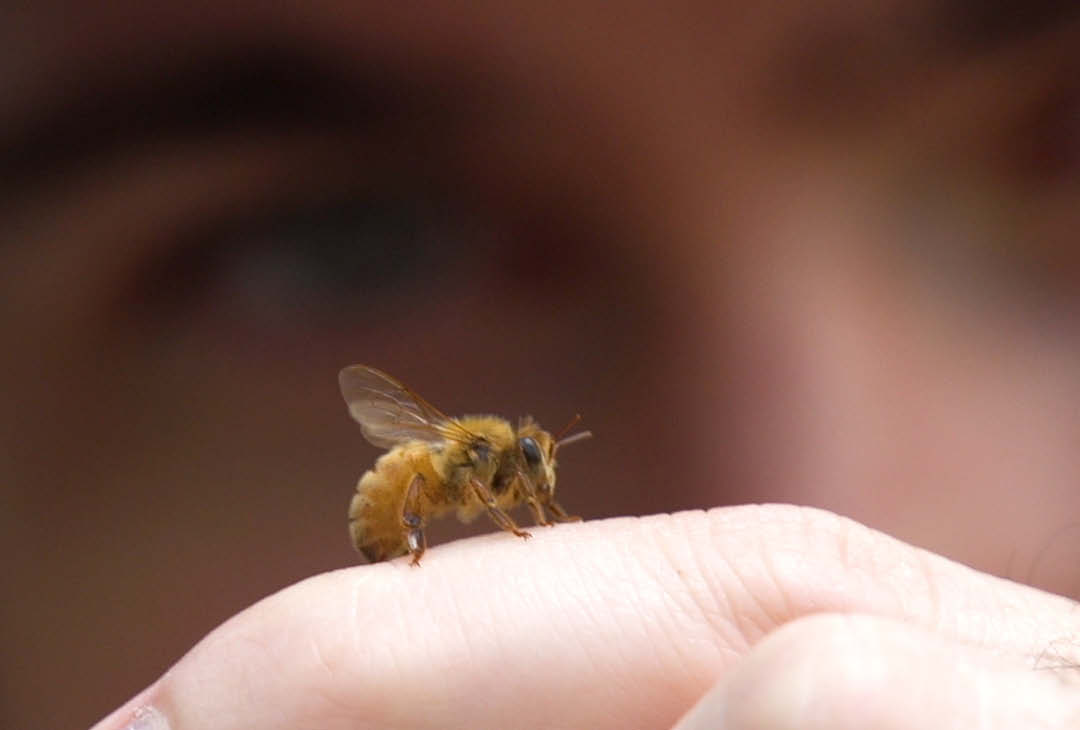What's The Buzz
Bees live all around the world; globally there are over 20,000 different species. Here in Australia, there is 1650 different type of species that we know of however there could be up to 2,000 or even 2,500!
Most bee species in Australia live by themselves, these are solitary bees, single bees nesting on their own, doing all the hard work by themselves, including laying their own eggs.
Australia also has 11 species of native stingless bees. They live in a colony, they have a queen, they have worker bees and they make honey. These native stingless bees are only found in tropical and sub-tropical places, and are charismatic bees at honey making.
Bees are the most important group of pollinators in the world and without bees in our eco-systems pollinating native plant species and being involved in our crops - helping us with food security through crop pollination, the world wouldn’t be the place it is.
Native stingless bees are small black bees that live in sub-tropical and tropical places in Australia. These bees live in colonies of thousands of individuals, they have a queen, and they have worker daughters and even have a few male sons. These bees are interesting because they make honey and not many bees make honey. These bees make just a few litres of honey a year. In captivity though, we can keep these bees in boxes, hive boxes, where we can propagate them to make new colonies and we can harvest their delicious tangy honey.
Native stingless bees are kept in boxes on the east coast of Australia in the tropical and sub-tropical areas. Most people keep these bees for the love of it, keeping a small hive of bees in the garden, watching them coming and going. Interestingly these native stingless bees are kept on farms as managed pollinators in particular for the macadamia crops and blueberry crops. These bees do a great job of pollinating both of those.
In the wild, native bees nest in the tree cavities, big old hollow trees, where hollow has developed. The bees will construct their nest there and can persist for decades if conditions remain favourable and the tree remains intact. There is a turnover of bees in that time, bees die, queens die but as a reproductive unit that colony is ongoing, as long as the conditions are favourable and the nest is intact.
Native stingless bees are interesting because they are stingless. These bees over their evolutionary time have lost their ability to sting which makes them very practical bees from our human perspective because logistically we can manage them without the fear of being stung. They are suitable for both adults and children.
Some of our native solitary bees include the charismatic Blue Banded bees. These little bees are quite hairy with orange hairs and iridescent blue stripes on their abdomens. You will see them zooming from flower to flower, the females, however, nest underground. The Blue Bandit bees dig tunnels underground about 20cm deep, where they raise their babies. They do all this work by themselves and only the only time they interact with other bees is when they mate.
You won’t see the Blue Banded bees in the colder months of the year, because the adults die of old age and the ones left are in the lava in the soil growing, waiting for the weather to warm up before they pupate and emerge as adults in the spring.
We also have the large Carpenter bees. These bees are often mistaken for bumblebees, due to their yellow throat and a black abdomen. They are big buzzy bees who often nest in the tops of trees, chewing holes into small branches where they construct their nest by themselves.
The number one way we can protect native bees is to protect the places they live and eat – the bush, native forests and native vegetation. If we protect these places then the bees will be fine in the wild left without us. If we lose these places we lose the bees.
Find out more - https://www.beeawarebrisbane.org/


